The function below should create buffers of varying distances for each of the two points it is given, finds the intersection the two buffers, unions the intersections, and finally returns a convex hull of those intersections. The output should be a near approximation of an ellipse with the two points as foci.
The straight-line(s) distance from one city to any edge of the polygon and then to the other city should equal the distance given in the function (200,000m in the example below).
It works on the data provided, but is fragile as there's no error checking or warning suppression. Make sure the dist argument is greater than the distance between the two points, and that the points have a crs that can use meters as a distance. (lat/lon might not work)
The example below only uses 20 points for the 'ellipse', but changing the function should be relatively straightforward.
library(sf)
#> Linking to GEOS 3.8.0, GDAL 3.0.4, PROJ 6.3.1; sf_use_s2() is TRUE
library(tidyverse)
#Give Coordinates
citylocations <- tibble::tribble(
~city, ~lon, ~lat,
"London", -0.1276, 51.5072,
"Birmingham", -1.8904, 52.4862,
)
citydflocations <- as.data.frame(citylocations)
#Convert to SF
citysflocations <- sf::st_as_sf(citydflocations, coords = c("lon","lat" ), crs = 4326)
#Convert location file to National Grid Planar
cityBNGsflocations <- citysflocations %>%
st_transform(citysflocations, crs = 27700)
#Produce circles with 100km buffer
dat_circles <- st_buffer(cityBNGsflocations, dist = 100000)
join_circles <- st_union(dat_circles) %>%
st_transform(4326)
#plot(join_circles, col = 'lightblue')
### the ellipse function using 20 buffers ####
ellipse_fn <- function(x_sf, y_sf, distance){
#set distance argument to meters, get sequence of distances for buffers
distance = units::set_units(distance, 'm')
dists_1 <- seq(units::set_units(0, 'm'), distance, length.out = 22)
# create empty sf object to place for loop objects in
# purrr would probably be better here
nrows <- 20
df <- st_sf(city = rep(NA, nrows), city.1 = rep(NA, nrows), geometry = st_sfc(lapply(1:nrows, function(x) st_geometrycollection())))
intersections <- for(i in 2:21){
buff_1 <- st_buffer(cityBNGsflocations[1,], dist = dists_1[i])
buff_2 <- st_buffer(cityBNGsflocations[2,], dist = distance - dists_1[i])
intersection <- st_intersection(buff_1, buff_2)
df[i-1,] <- intersection
}
df %>%
st_set_crs(st_crs(x_sf)) %>%
st_union() %>%
st_convex_hull()
}
### end ellipse function ###
# Using the ellipse function with 2 points & 200000m distance
ellipse_sf <- ellipse_fn(cityBNGsflocations[1,], cityBNGsflocations[2,], dist = 200000)
# You'll get lots of warnings here about spatial constance...
ggplot() +
geom_sf(data = ellipse_sf, fill = 'black', alpha = .2) +
geom_sf(data = cityBNGsflocations, color = 'red')

Created on 2022-06-03 by the reprex package (v2.0.1)
mapview plot of the cities & 'ellipse' on a map:


